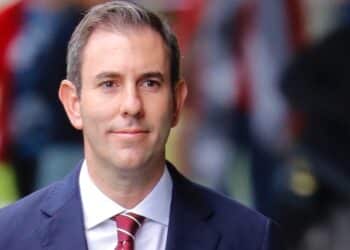Perhaps more than any other year since Australian financial advisers have been doing business, 2013 was one of upheaval and change.
Some self-imposed, others enforced by politicians and their public servants, the past twelve months have centred around fundamental shifts, not only in remuneration and disclosure requirements, but in the way advisers approach the very core of what they do.
The best interests duty and move to a fee-for-service mentality have been deeply ingrained, coupled with rising educational standards led by the industry associations. It is rare to hear of financial advisers still making the case for product commissions, rather, the majority have embraced the new world order.
In everyday conversations with financial advisers and those that represent the industry or provide services to it, ifa has found the overwhelming sentiment since ‘FOFA Day’ (1 July) has been ‘heads down, bums up’ implementation of new systems and processes – a work ethic of which the industry can be proud.
In this reflective analysis of the year that was, ifa looks in-depth at changes on three fronts: the legislative changes, the enforcement of those regulatory changes, and the changing dynamics of corporate strategy at the licensee/product level.
Viewing the year through these three prisms reminds us that 2013 has not been easy – for some more than others – but it also tells a story of amazing resilience in the face of a difficult business environment, and of an industry coming of age as it resembles a highly educated, modern profession more and more each day.
Legislation, regulation, education
After a solid few years of upheaval and uncertainty, 2013 was possibly the biggest year in recent memory in terms of legislative change.
Possibly the biggest was the 1 July FOFA implementation date, but anyone who expected the shape of the reforms to be widely known before then would have been deeply disappointed.
One of the FOFA elements of greatest concern to financial advisers, the vexed ‘grandfathering’ provisions, was quietly uploaded, with no fanfare, to the ComLaw website late on Friday 28 June – literally after the close of business on the last business day before the reforms came into effect.
The advice industry is still attempting to disentangle the vaguely-worded explanatory memorandum, with the Association of Financial Advisers (AFA), among others, cautioning advisers against moving licensees if they don’t want to trigger a grandfathering event and have any current commission-related arrangements terminated.
Legal experts continue to insist it is possible to move without triggering ‘new’ arrangements to come into force if done carefully, but until Australian Securities and Investment Commission (ASIC) provides more concrete examples or someone tests the water, the advice industry will remain unclear about what will be permitted.
Possibly the most pressing FOFA-related difficulty for advisers is dealing with fee disclosure statements (FDS), with many saying it has instantly added a significant financial and administrative cost.
Controversial opt-in requirements – which fortunately do not require planner action until two years after the 1 July 2013 start date – may yet never see the light of day.
That change is among 16 promised amendments which also include a refining of the best interests duty and risk commission ban inside super, as recently outlined by Assistant Treasurer Arthur Sinodinos.
At the start of this year, Financial Planning Association (FPA) chief executive Mark Rantall flagged the Tax Agent Services Act (TASA) with ifa as one of the big issues that may have crept under the radar, but it didn’t stay there for long.
TASA formally passed through the Senate at the end of June, along with a raft of other financial services and superannuation pieces of legislation that got crammed into the parliamentary schedule as the government attempted to clear the books leading up to the election.
One of the sticking points that caused some friction between the accounting and financial planning professions was the implementation time frame, with planners questioning why accountants enjoyed a three-year phase out of the self-managed super fund (SMSF) exemption while they were afforded no such luxury when being brought under the auspices of the Tax Practitioner’s Board for tax-related issues.
It eventually passed with a 12 month implementation extension following some frantic late lobbying from planning bodies and Coalition senator Mathias Cormann – now Finance Minister – with concerns raised about a lack of parliamentary process, implementation costs and tight time frames.
In 2011 ASIC flagged the prospect of a unified national curriculum and exam for financial advice via its CP 153 consultation paper. There had been calls for some time for a more unified approach, with many suggesting ASIC as a natural fit to oversee the process, but the plans have been on hold for some time.
2013 however saw an increase in the regulator’s attention towards adviser training standards with the release of CP 212 (Training of financial product advisers) in June and CP 215 (Assessment and approval of training courses for financial product advisers) in August, which each looked to update RG 146, the current minimum training standards for advisers.
CP 212 for the first time flagged a formal shift towards a degree minimum requirement for advisers, after the Financial Planning Association had itself already moved in this direction, installing a degree minimum for new CFPs. However the legislation seemed to leave a loophole whereby if advisers met the national exam requirements proposed by CP 153 they would not need the degree equivalent outlined in CP 212.
It also left large question marks over how the various requirements would be weighted and assessed.
September 2013 brought a change of government, and it brought a range of implications for the financial services industry. Aside from a likely change in attitude towards and treatment of superannuation and a stated moratorium on further regulatory change, it also brought the new reality of an inquiry into the financial system to be headed by former CBA chief David Murray – the scope of which, and impact on advisers, is yet to be seen.
Money where its mouth is
The past 12 months have been personified not only by legislative change, but a renewed vigour with which those changes are enforced. ASIC has been particularly active this year in pointing to its enforcement record – perhaps because one of the other major news stories of the year was an announced Senate inquiry into ASIC’s own performance.
In its enforcement outcomes report for the first half of 2013, ASIC showed it had completed 63 investigations in the financial services industry.
The ‘outcomes’ comprised of nine criminal convictions, 13 civil findings, 28 administrative remedies and 13 enforceable undertakings/negotiated outcomes.
ASIC kicked off the year in January by accepting a major enforceable undertaking (EU) from Macquarie Equities Limited in relation to its financial advice business, Macquarie Private Wealth.
The EU followed a surveillance that found a number of “compliance deficiencies” at Macquarie, including client files not containing statements of advice as well as a poor compliance culture.
An independent expert will report regularly to ASIC over until the end of 2014 as Macquarie implements the plan laid out in the EU.
Since 30 June ASIC has accepted a further ten EUs, including one from dealer group WealthSure and another from former WealthSure chief executive Darren Pawski in September.
In late December, ASIC accepted EUs from CommSec, UBS and NAB.
Beyond EUs, ASIC has also moved to remove a number of players from the industry entirely, some not so small.
In January, ASIC cancelled the licence of formerly 186 adviser-strong dealer group AAA Financial Intelligence and related entity AAA Shares, citing compliance and business model concerns.
An ifa investigation subsequently found the concerns largely related to rogue authorised reps operating outside their approved product list.
The collapse of AAAFI was listed by ASIC deputy chairman Peter Kell as among the key instigations for a mass surveillance campaign of the risk advice sector in a speech to the AFA conference.
Other cancellations were dished out to groups including Addwealth, Chambers Investment Planners and Stellar Securities, all of which were from Western Australia and found to be in breach of various licensing conditions.
Along with its long-term surveillances that result in EUs and other actions, ASIC is also conducting ‘FOFA visits’ to check on the progress of financial advice groups as they comply with the new legislation.
In the 2012/2013 financial year ASIC visited 24 new Australian Financial Services licensees to “build relationships with them and to help them meet their obligations”, according to ASIC’s major submission to the Senate Economics committee’s inquiry into the regulator’s performance.
ASIC revealed in the submission that it intends to continue the visits in the 2013/14 financial year.
The submission also called for enhancements to ASIC’s enforcement powers – including greater search warrant powers and a wider range of available penalties.
Advice to self-managed superannuation funds (SMSFs) has also come under ASIC’s scrutiny in 2013, with an investigation by the regulator’s SMSF taskforce resulting in the release of a consultation paper in September.
ASIC’s recent review of the SMSF advice sector found there was “significant room for improvement in the quality of advice received by clients” – particularly when it comes to the disclosure of information that may influence the decision to switch superannuation funds or establish an SMSF.
“ASIC does not want to see an influx of trustees who are ill-equipped to cope with the responsibilities and obligations of running a SMSF,” said Peter Kell at the time.
Big fish, little fish, new fish
Those enforcement actions have meant there were more advisers looking for new homes in 2013 than there otherwise might have been.
Coupled with the exorbitant cost of doing business for smaller financial advice firms under the FOFA reforms, this has led to a situation advantageous to the major financial institutions – for whom this year has been about one thing: growth.
While product commissions are now banned, distribution is still king for product manufacturers, many of whom have launched or are rapidly expanding their own dealer group channels. However, this has been the way for much of the past few years and, in fact, fears of consolidation escalating post-FOFA were unfounded, with many major deals having already been done.
With 2012 and 2011 seeing two of the nation’s largest non-aligned dealer groups – Count Financial and Clearview Wealth – snapped up by larger buyers (CBA and CCP BidCo respectively) there was little movement in 2013 outside of piecemeal acquisitions with many groups acquiring a number of practices via bolt-on or tuck-in acquisitions.
Possibly the biggest move was the acquisition of Lachlan Partners by SFG – itself the product of a major merger in 2011 between Snowball and Shadforths. The acquisition of the tax, finance and business advisory group added approximately 55 adviser and accountants to SFGA’s existing 109 representatives.
In what was speculated to be an emerging trend in the industry, SFG put the acquisition down the increasing need for a ‘whole of service’ firm and the importance of integration of different arms of financial services.
Non-aligned accounting-focused dealer group Countplus – a former related entity of Count Financial that survived the CBA deal – also continued picking up smaller practices over the 2013 as ‘tuck ins’ including Sydney-based firm Peak Financial Services and sole accounting practitioner Mark Palmer in July 2013.
In addition, movement came from the Commonwealth Bank, with dealer group Whittaker Macnaught being absorbed over the year by CBA-owned Financial Wisdom.
Following a strategic review by the bank, Whittaker Macnaught closed its doors at the end of June this year with 13 of its 28 advisers setting up practices under Financial Wisdom. A further four moved to QLD based Financial Wisdom practice Eureka Financial Group, which was rebranded as Eureka Whittaker Macnaught in June.
Following this, boutique dealer group WB Financial was also folded into Financial Wisdom over the year.
A new entrant to the industry was Mortgage Choice Financial Planning, which was soft launched in October 2012.
The major brokerage outperformed in 2012/2013 target of 8 to 10 advisers by June 30, signing 11 by the target date and 16 by the end of August. “The progress of Mortgage Choice Financial Planning is very pleasing,” said Mortgage Choice chief executive Michael Russell.
2013 also saw the arrival of the dealer group, Netwealth Advice Group (NAG) formed through an arrangement between Pathway Licensee Services, Financial Planning Services Australia (FPSA) and Bridgeport Financial Services.
The other major move by advisers came in the wake of AAAFI’s collapse. Following the licence cancellation, former authorised representatives (ARs) of the collapsed licensee were “given thirty days to find a new dealership to move to or find [themselves] with [their] licence revoked,” according to one former AR – speaking to ifa on condition of anonymity.
As a result as many as 80 of the 130 AAAFI ARs joined Suncorp-aligned Guardian Advice and other institutional dealer groups. Dealer group Australian Financial Services (AFS) Group also went into administration, with many of its advisers joining institutionally-aligned channels.
At the micro level, there were also a huge number of personnel moves at the big and small ends of the chain, with major changes at AMP and NAB Wealth in particular.
But contrary to the consolidation story, ifa has also noted glimmers of a trends toward re-embracing independence towards the end of the year. Speaking at the 13th annual Wraps, Platforms & Masterfunds conference in the Hunter Valley IOOF general manager, distribution, Renato Mota reaffirmed his certainty that the end is not nigh for non-aligned advisers.
“Whilst we have seen a contraction of the mid-size dealer groups and independent groups I think there will be a re-emergence of the independents – and I think it will largely be led through technology-based efficiencies,” said Mr Mota.
In addition, consultancy firm My Dealer Services (MDS) has seen a significant increase in demand for advice practice principals seeking to operating under their own AFSL.
This re-ignition of interest in self-licensing perhaps stems from a general optimism that seems to have pervaded the industry towards the end of the year, as it became clear that many of the apocalyptic pre-FOFA warnings had been over-stated.
While the year has been tumultuous for all – and painful for some – undoubtedly those that have pushed on through FOFA and done the right thing are already starting to reap the rewards, reflecting a financial advice profession that is increasingly diverse, educated, professional and ready for what tomorrow might bring.




here is 2013
Good summary of 2013 and well written.